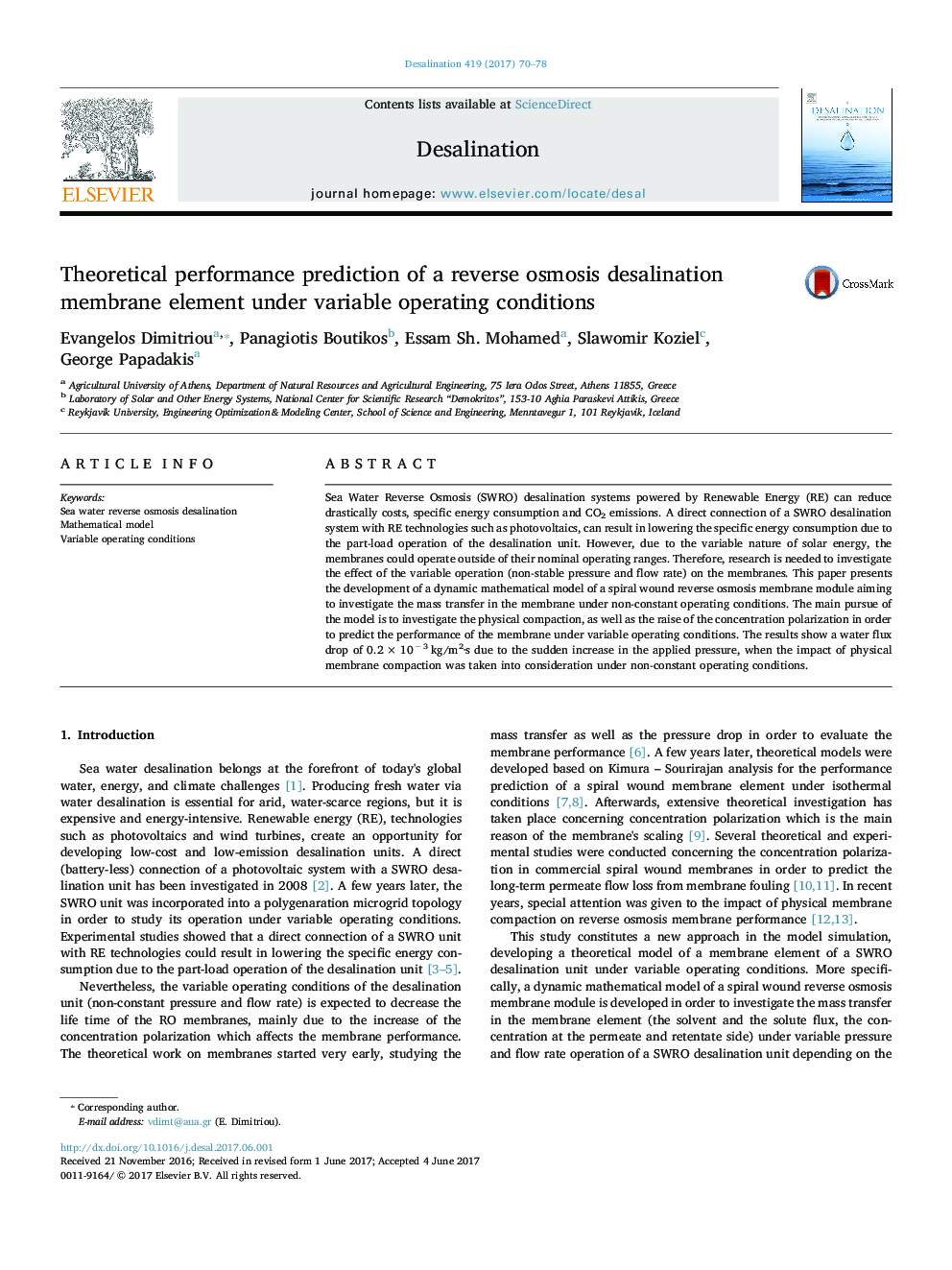| Article ID | Journal | Published Year | Pages | File Type |
|---|---|---|---|---|
| 4987685 | Desalination | 2017 | 9 Pages |
Abstract
Sea Water Reverse Osmosis (SWRO) desalination systems powered by Renewable Energy (RE) can reduce drastically costs, specific energy consumption and CO2 emissions. A direct connection of a SWRO desalination system with RE technologies such as photovoltaics, can result in lowering the specific energy consumption due to the part-load operation of the desalination unit. However, due to the variable nature of solar energy, the membranes could operate outside of their nominal operating ranges. Therefore, research is needed to investigate the effect of the variable operation (non-stable pressure and flow rate) on the membranes. This paper presents the development of a dynamic mathematical model of a spiral wound reverse osmosis membrane module aiming to investigate the mass transfer in the membrane under non-constant operating conditions. The main pursue of the model is to investigate the physical compaction, as well as the raise of the concentration polarization in order to predict the performance of the membrane under variable operating conditions. The results show a water flux drop of 0.2 Ã 10â 3 kg/m2·s due to the sudden increase in the applied pressure, when the impact of physical membrane compaction was taken into consideration under non-constant operating conditions.
Related Topics
Physical Sciences and Engineering
Chemical Engineering
Filtration and Separation
Authors
Evangelos Dimitriou, Panagiotis Boutikos, Essam Sh. Mohamed, Slawomir Koziel, George Papadakis,
